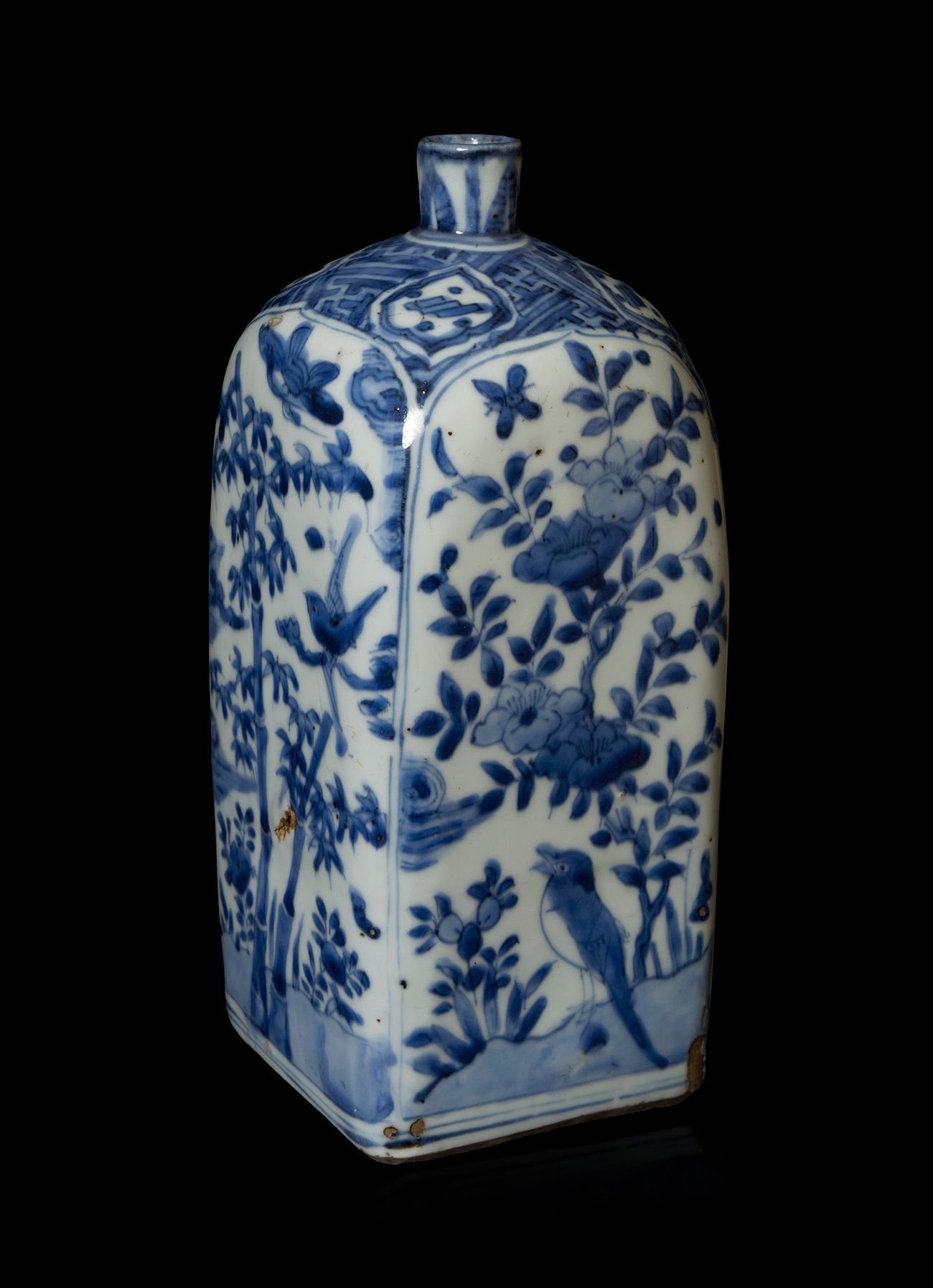Description
Vase; Ming Dynasty, China, 16th century. Kraak porcelain. Slight wear on the rim. Measurements: 25 x 10 x 10 cm. A Ming dynasty porcelain vase with a square base and an elongated prismatic body. In the area of the shoulders it tends towards the sphere with the mouth in the centre, starting from a narrow, cylindrical and short body. Kraak ware is a type of Chinese export porcelain produced mainly in the late Ming dynasty, in the reign of Wanli (1573-1620), but also in Tianqi (1620-1627) and Chongzhen (1627- 1644). It was one of the first Chinese export wares to reach Europe in large quantities and frequently appeared in Dutch Golden Age paintings of still-lifes with foreign luxuries. Porcelain known for its chromaticism as 'cobalt blue' or 'blue on white' was highly prized in Europe from its early importation. In fact, it was so much appreciated by other cultures such as Islam that it was very often works destined for this market that ended up influencing European ceramic production, which aspired to resemble as closely as possible this export production created in large quantities in China. It was not until around the middle of the 17th century that production began in this oriental country, blue and white porcelain being among the first to arrive directly in Europe in large quantities.
54
Vase; Ming Dynasty, China, 16th century. Kraak porcelain. Slight wear on the rim. Measurements: 25 x 10 x 10 cm. A Ming dynasty porcelain vase with a square base and an elongated prismatic body. In the area of the shoulders it tends towards the sphere with the mouth in the centre, starting from a narrow, cylindrical and short body. Kraak ware is a type of Chinese export porcelain produced mainly in the late Ming dynasty, in the reign of Wanli (1573-1620), but also in Tianqi (1620-1627) and Chongzhen (1627- 1644). It was one of the first Chinese export wares to reach Europe in large quantities and frequently appeared in Dutch Golden Age paintings of still-lifes with foreign luxuries. Porcelain known for its chromaticism as 'cobalt blue' or 'blue on white' was highly prized in Europe from its early importation. In fact, it was so much appreciated by other cultures such as Islam that it was very often works destined for this market that ended up influencing European ceramic production, which aspired to resemble as closely as possible this export production created in large quantities in China. It was not until around the middle of the 17th century that production began in this oriental country, blue and white porcelain being among the first to arrive directly in Europe in large quantities.
